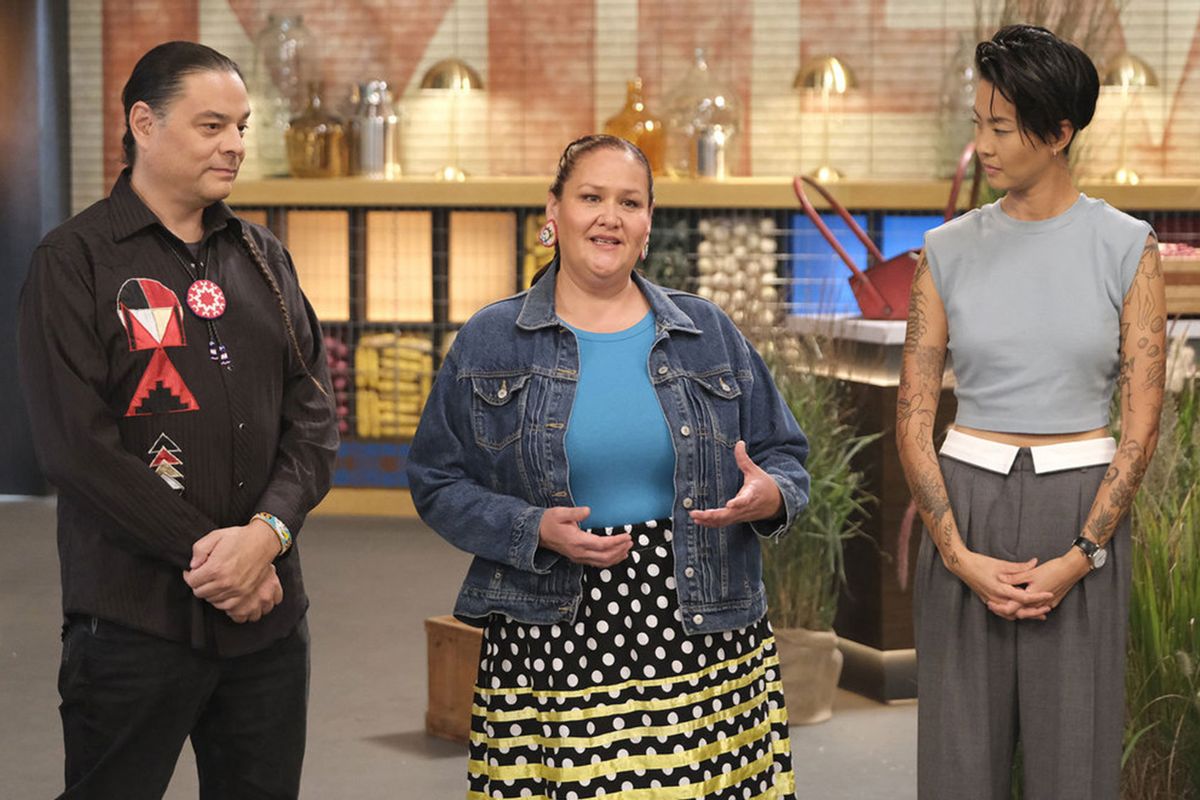In the ninth episode of this Wisconsin-set season of "Top Chef," aptly titled "The Good Land," host Kristen Kish tasked the cheftestants with a challenging prompt.
This challenge was, bar none, my favorite of the season thus far. The idea of prioritizing — and exclusively using — only native and indigenous ingredients in every dish was a great way to honor the land in which the show is being filmed, as well as challenging the cheftestants beyond their usual repertoire; they were barred from using all dairy, sugar, wheat, chicken, beef and pork. (Though of course, it should also be noted that what is native or indigenous to chefs in Wisconsin is markedly different from what is native or indigenous to me, in New Jersey, or someone cooking in Nebraska.)
While dairy-free, sugar-free, or wheat-free cuisine can oftentimes be derided, this shows that it is: an incredibly viable way to cook, if not a preferable way to eat; totally doable; and able to result in delicious, well-made food, with or without substitutes. And in most cases you probably already have some of the ingredients needed to cook this way already on hand, such as corn, beans, squash, wild rice and much more.
“The Good Land” also shows that the food can exist on its own, truly sourced from the land and the waters, with nothing to muddy up its inherent locality, its purity, its richness. And for that lesson to be communicated through a frenzied challenge in a competitive cooking reality show is pretty spectacular on its own.
Kish enlisted chefs Elena Terry and Sean Sherman to help further elucidate the challenge. Terry, who is the executive chef and founder of Wild Berries, and Sherman — co-founder of NĀTIFS (North American Traditional Indigenous Food Systems), as well the chef-owner of Owanmi Restaurant in Minneapolis — also cooked a meal for the contestants, which included everything from berries, walleye, sunflowers and wild rice to rose hips, dandelion greens, bison and other wild game, corn, mushroom, duck and wild hyssop.
They also aided the cheftestants in flavor and cookery. For example, since citrus was a no-go under the rules of the challenge, Sharman and Terry advised the chefs to use ingredients like sumac or aronia in order to add notes of acidity and bitterness.
None of the cheftestants had ever eaten at a restaurant serving Native cuisine, which is a damning revelation to come out of the most prominent and well-respected culinary competition on television. It’s not a reflection on the contestants or on “Top Chef,” per se, but on the culture and restaurant industry at large. As Amanda stated, the impacts of colonization and its impact on culinary arts worldwide is something that "hasn't been thoroughly explored."
To that end, when speaking on NPR’s Fresh Air podcast in 2022 showcased, Sherman's menu offers allows for "diners [to] order off a menu that's been 'decolonized.'" Sherman, a multiple James Beard-winning chef, told NPR that one of his goals is to "to see the world differently through this Indigenous perspective of realizing that all these plants around us have some kind of purpose — whether it's food, it's medicine or crafting."
Sherman also said that "we're not cooking like it's 1491. We're not a museum piece of something like that. We're trying to evolve the food into the future, using as much of the knowledge from our ancestors that we can understand and just applying it to the modern world." Last year, Ali Elabbady wrote in Eater about another one of Sherman's efforts, an indigenous food lab and market that opened in Minneapolis.
We need your help to stay independent
In 2022, Carolyn Kormann wrote "How Owamni became the best new restaurant in the United States" in The New Yorker, highlighting the food itself, but more importantly, the ethos and the advocacy behind it.
"My first plate was raw deer, or “game tartare,” listed under a menu section titled “Wamakhaskan,” the Dakota word for animal. The dish was a study in circles: the meat pressed flat and dotted with pickled carrots, moons of sumac-dusted duck-egg aioli, microgreens, and blueberries. A blue-corn tostada served as a utensil. One bite was a disco ball in the forest."
On "Top Chef," while the cheftestants dishes weren't all wins, there were some real standouts: Savannah's winning and inspired squash-and-maple "jelly cake" dessert with an array of sauces made from aronia, grapes and plum jelly, Soo's wild rice and huitlacoche "dumplings," Dan's incredibly inventive sunflower-chokes-treated-like-artichokes.
These dishes highlighted the local offerings, native ingredients which had been used for generations and generations. I so appreciated the in-depth, respectful critiques from Terry, Sherman and the other diners, all so attuned to the flavors and customs of their land, being critical and direct but not in a harsh manner. To hear the celebration and positive words for the dishes they enjoyed, though, was remarkable.
One dish even caused one of the indigenous guest diners to remark "I know that this came from my land. It feels like home.”

Shares